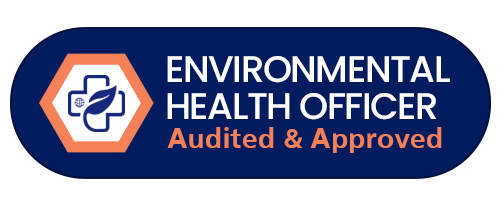The 6 Safeguarding Principles – Everything You Need To Know
Pexels Licence – Andrea Piacquadio
In 2014, the UK government launched the Care Act 2014. It defined the legal requirements for caring for adults, supporting carers, and care standards. It also outlined six fundamental safeguarding principles to help carers provide adequate, respectful support.
Understanding each principle and then applying them effectively is a legal requirement for care, ensuring that your support addresses a vulnerable person’s needs. This simple guide breaks down each safeguarding principle in the Care Act so that you can offer the best living conditions for the people you protect.
1. Empowerment
Encourage vulnerable people to make decisions about their lives.
Vulnerable people are typically safeguarded as they cannot make crucial decisions about their health and well-being. However, completely removing their agency to make these choices can lead to abuse and neglect.
To help them make an informed decision, we need to assess the information and resources required for a vulnerable person to understand their options. Each case will be different, so adapting to an individual’s impairments is vital. Ask yourself: how can I present this information clearly to help them understand? Break it down into simple terms and address their key concerns.
How Does This Help Those In Care?
- They can continue to manage their lives, preventing decisions that they do not agree with
2. Prevention
Act before harm can occur.
Prevention is the key to safeguarding, as it shields vulnerable people from abuse and neglect. This principle applies to any safeguarded person, no matter their situation. If they have already been subjected to abuse or neglect, you can still take preventative measures to protect them from future trauma and damage.
Taking prevention measures involves multiple steps, including training staff to recognise and prevent harm and creating clear, informative resources to access at any time. But you should always tailor your approach to the individual in your care, acknowledging their needs and interests.
How Does This Help Those In Care?
- It protects people from harm before it occurs
3. Proportionality
Safeguarding intervention should never exceed a vulnerable person’s needs.
Unfortunately, anytime you place safeguarding measures on an individual, you limit their freedom. Therefore, you should only intervene where necessary and never act beyond reasonable requirements. This policy protects that person from abuse and harm whilst maintaining their individuality and liberties. It works hand-in-hand with empowerment.
Taking a one-size-fits-all approach risks exceeding the reasonable limits of care. To avoid this issue, you should create care plans tailored to each person’s situation and needs, protecting them effectively without unjustifiably tampering with their life.
How Does This Help Those In Care?
- It protects vulnerable people without disrupting their lives more than is necessary
4. Protection
You must support and represent vulnerable individuals.
When someone is experiencing abuse or neglect, they often feel as if there is no support available. We need to know how to deal with concerns, stop abuse and offer additional support to those in need.
The best practice is to provide transparent information that teaches people to recognise the indicators of abuse and understand when to reach out for support. This information must cater to vulnerable people and those around them to create large support networks. You should also immediately respond to issues or worries and swiftly remove at-risk people from harmful situations to prevent potential harm.
How Does This Help Those In Care?
- It allows them to reach out for support with abuse and access safeguarding
- Those around them know what signs to look for and when to seek assistance
5. Partnership
Partner with local authorities and care resources to provide the best safeguarding support.
Administering effective safeguarding alone is almost impossible and risks missing out on valuable strategies and services. By working with the available support networks, you can provide the highest level of protection.
This collaboration will avoid conflicting care responses and allow you to coordinate support and offer the safeguarded individual multiple providers. You can set up a joint plan to cater to all their needs. Be aware that any communication between parties must comply with the Data Protection Act 2018 to uphold the vulnerable person’s right to privacy.
How Does This Help Those In Care?
- It provides clear support across multiple services, improving the safeguarding standards
6. Accountability
Remain transparent and responsible for safeguarding care.
Recording and monitoring a safeguarding process is vital; transparency about every step reduces mistakes and improves care. It means that your processes can be optimised or revisited if problems occur.
When you support a vulnerable person, they need to understand the roles and responsibilities of each of their caregivers. You should provide important contact details in case they require assistance.
Another key element of accountability is effective communication between your teams and the local authorities and services. Explain each new development so that everyone is aware of the situation. Subsequently, you can arrange and coordinate further support.
How Does This Help Those In Care?
- Their care is tracked to optimise it and prevent mistakes
Learn How To Safeguard With Caredemy
Learning how to safeguard effectively is easier than ever before. You can compound your knowledge from our blogs with our CPD-accredited courses and certificates and progress your career. With Caredemy, you can build your skills and, most importantly, help more people.
We have dozens of courses for individuals and groups to learn about every facet of care. They cover multiple industries, from health care to childcare, sport and even taxi services, allowing you to broaden your knowledge. Plus, they are perfect for employers looking to train their teams, and even our non-clinical courses are written by experienced industry experts.
You can enrol easily online today or speak to our friendly specialists to learn more about our courses and what they can do for you.
FAQ
What are the 5 Ps of child safeguarding?
When safeguarding children, abide by the 5 Ps:
- Prevention
- Paramountcy
- Protection
- Partnership
- Parental responsibility
Why are the 6 safeguarding principles crucial?
Employing the 6 safeguarding principles laid out in the Care Act 2014 prevents the abuse and neglect of vulnerable people. They protect these people without lowering their standard of living.
What are the well-being principles set by Care Act 2014?
The Care Act 2014 sets out six principles of safeguarding to help carers structure their support. These principles are:
- Empowerment
- Prevention
- Proportionality
- Protection
- Partnership
- Accountability
What section of the Care Act 2014 covers safeguarding?
Whilst the entire Care Act 2014 is relevant to safeguarding, different safeguarding responsibilities are explicitly discussed in sections 42-47, 68 and schedule 2.









